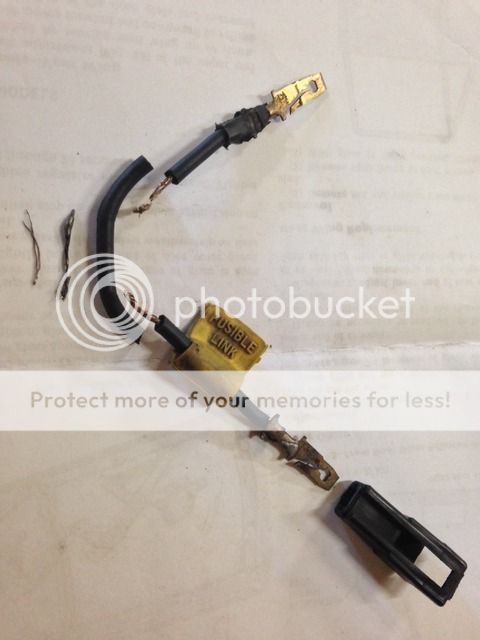Not arguing with any of the very good information and advice you have given John. I also can't help but apply a bit of real world to an issue like this... there is no way any shop would be puttering around this for a week or two... It needs replaced with something safe and durable, and you would have 1-2 days out of service to come up with the pieces you get to use.
Now a guy who wants to maintain a factory appearance and function would have to do lots of digging, which has been done here... simply want to convey that it would be repaired, and would have been repaired when new, by somebody working flat rate and who had no time to sit around and debate 6" vs 6 1/2"... and been done with it in 10 minutes once his parts arrived.
Not meaning disrespect to furyfever either, but the idea that he will even find tolerances on a fusible link wire is way over engineering the repair. Fusible links were used under hood to provide circuit protection closer to the battery and before the wiring entered the passenger compartment... in the days of glass fuses, they were the best option commonly and cheaply available.
If a 20amp glass fuse failed, you would replace it once, maybe do a quick current measurement, and be done if it held. Same principal applies, do not raise the amperage under any circumstances. If in a bind and you found a 15amp would get you home... no problem, just not something to leave like that. If the 20amp fails immediately, you know you have a short somewhere, don't use another fuse until the issue is corrected. Call AAA.
Modern cars do a similar thing with a fuse box near the battery that has been weather protected to some degree. They use fuses that for one reason or another were the choice of the engineer's and/or corporation that they worked for.
http://ww2.justanswer.com/uploads/heavychevy396/2010-07-02_140508_Harbor_Freight_fuses.pdf
Go to NAPA as I have in the past and buy a small roll of fusible link wire, Dorman is fine... so long as quality materials are used. Make it approximately the same length as the original, an inch more isn't going to hurt you... don't go less, but an inch that way isn't going to burn down your car either. For an "idiot resistant" repair... no solder and watch your heat gun settings for the heat shrink... For WIW the key to fusible links is the insulation not supporting flame, so the wire inside may or may not appear special.
As for the connectors, new ones shouldn't be too hard to find. If in a rush I might have salvaged the old ones... in a pinch you could butt splice a length to the short wire remaining, but I wouldn't let that happen to a customer's car and would not consider it anything more than an emergency patch.
Now I know there are a few electrical engineer's in here... please correct me as you see fit. My career was to do an acceptable repair, you fella's had to break out the slide rules and abacuses to figure out a failure resistant circuit.




















